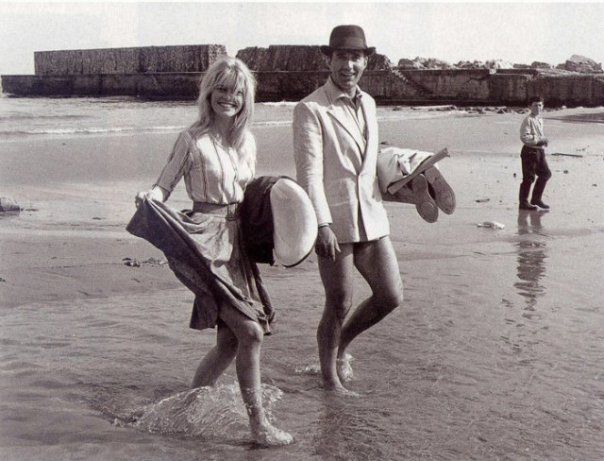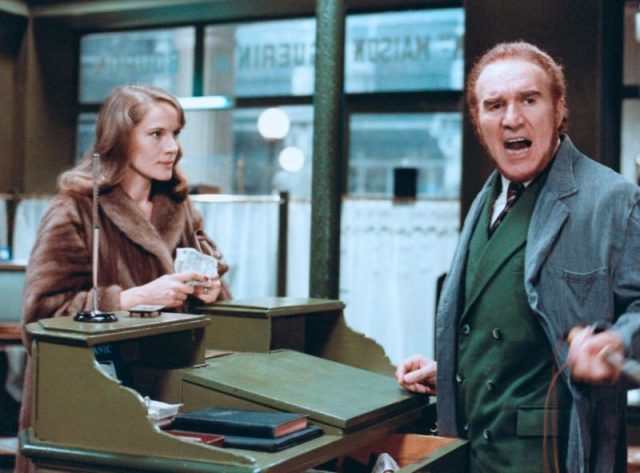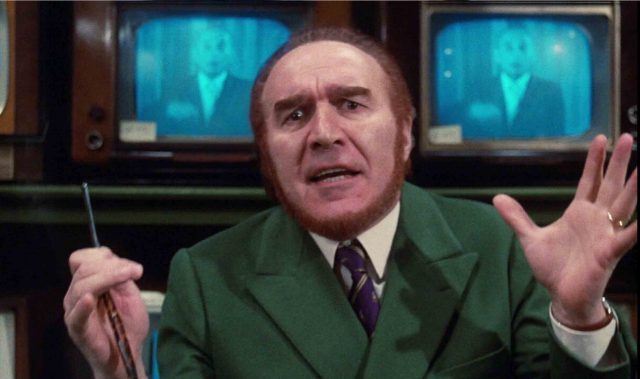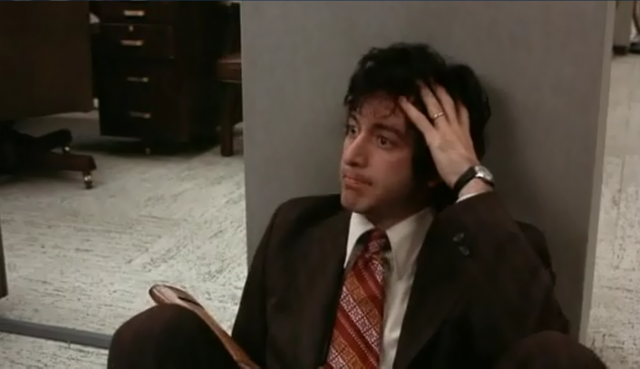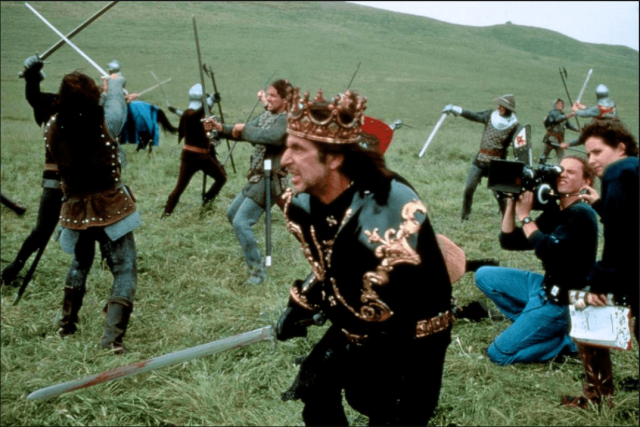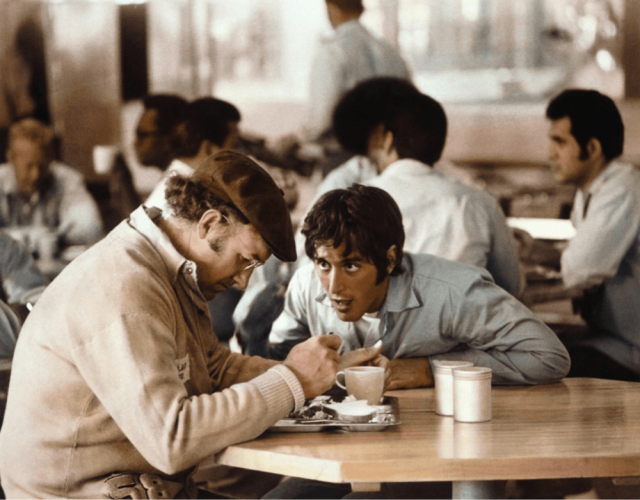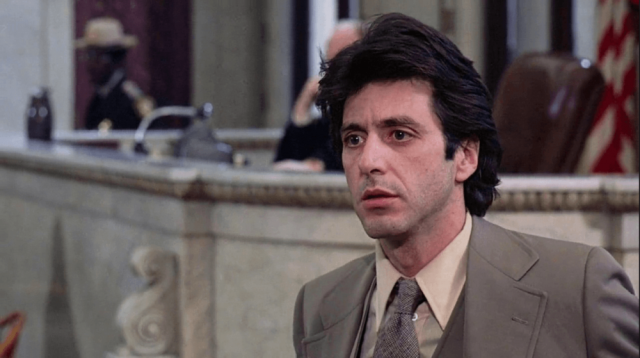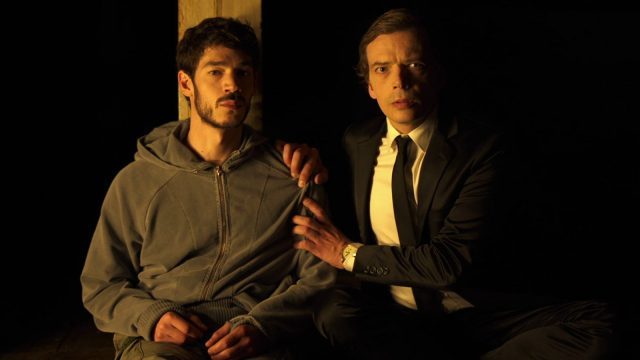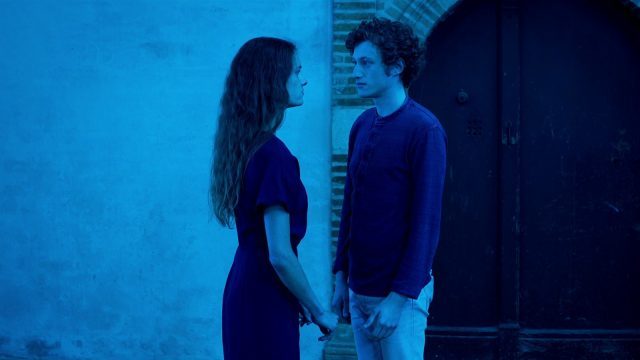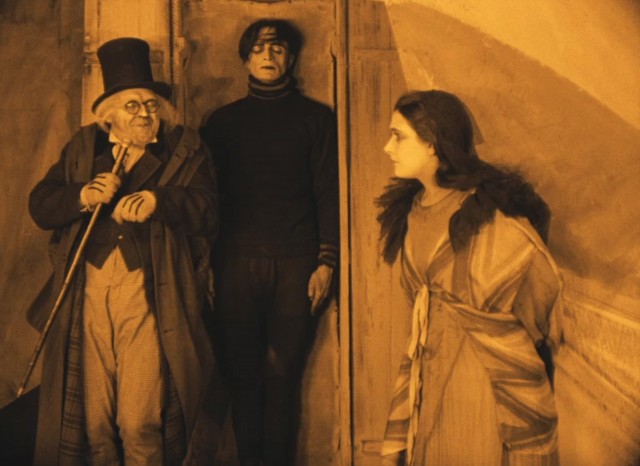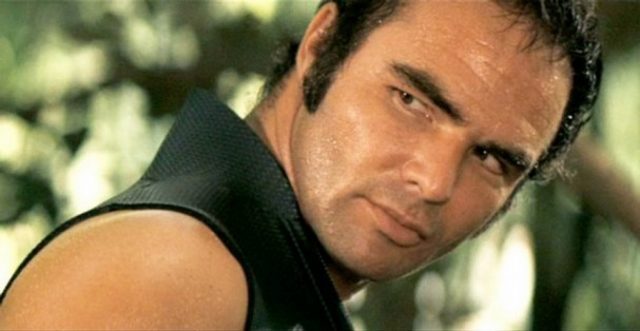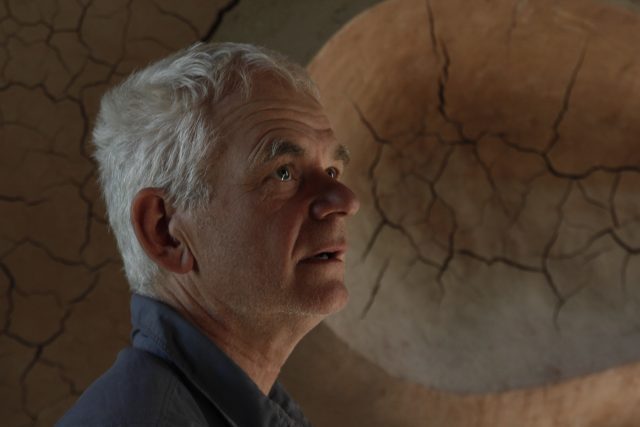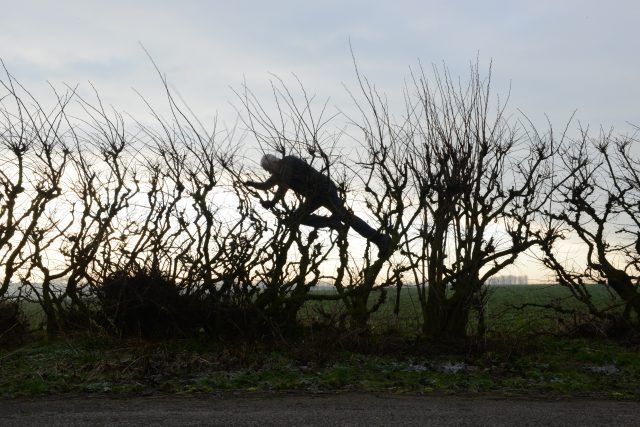CinéSalon: JEALOUSY (LA JALOUSIE) (Philippe Garrel, 2013)
French Institute Alliance Française, Florence Gould Hall
55 East 59th St. between Madison & Park Aves.
Tuesday, March 20, $14, 4:00 & 7:30
Series continues through April 17
212-355-6100
fiaf.org
www.distribfilms.com
 Nearly fifty years after the release of his first film, the short Les enfants désaccordés, post-New Wave auteur Philippe Garrel has made one of his most intimate and personal works, the deeply sensitive drama Jealousy. Garrel’s son, Louis, who has previously appeared in his father’s Regular Lovers, Frontier of the Dawn, and A Burning Hot Summer, stars as Louis, a character based on Garrel’s own father, essentially playing his own grandfather. As the film opens, Louis, an actor, is leaving his wife, Clothilde (Rebecca Convenant), for another woman, Claudia (Anna Mouglalis). A talented but unsuccessful actress, Claudia immediately bonds with Louis’s young daughter, Charlotte (Olga Milshtein). But soon jealousies of all kinds — professional, romantic, maternal, paternal, residential, and financial — affect all the characters’ desires to find happiness in life.
Nearly fifty years after the release of his first film, the short Les enfants désaccordés, post-New Wave auteur Philippe Garrel has made one of his most intimate and personal works, the deeply sensitive drama Jealousy. Garrel’s son, Louis, who has previously appeared in his father’s Regular Lovers, Frontier of the Dawn, and A Burning Hot Summer, stars as Louis, a character based on Garrel’s own father, essentially playing his own grandfather. As the film opens, Louis, an actor, is leaving his wife, Clothilde (Rebecca Convenant), for another woman, Claudia (Anna Mouglalis). A talented but unsuccessful actress, Claudia immediately bonds with Louis’s young daughter, Charlotte (Olga Milshtein). But soon jealousies of all kinds — professional, romantic, maternal, paternal, residential, and financial — affect all the characters’ desires to find happiness in life.
Shot in widescreen black-and-white by Belgian cinematographer Willy Kurant, who has photographed such films as Jean-Luc Godard’s Masculin Féminin, Agnès Varda’s Les creatures, and Maurice Pialat’s À nos amours during his glorious career, Jealousy is a subtle meditation on the many fears that can accompany love. Somewhat of an innocent, Louis doesn’t yet realize the consequences of his actions, thinking that he can slide through life and good things will just happen. But as his love for the secretive Claudia grows, so do the problems they all encounter. Philippe Garrel wrote the film, which is divided into two sections, titled “I Kept the Angels” and “Sparks in a Powder Keg,” with three collaborators, Caroline Deruas, Arlette Langmann, and Marc Cholodenko, who each took on different scenes, resulting in a choppiness that can be off-putting and disorienting at times, but the strong performances (featuring significant improvisation), tender pacing, quiet interludes, and melancholic score by Jean-Louis Aubert overcome that drawback. The film is very much a family affair — in addition to Philippe directing his son playing Philippe’s father, Philippe’s daughter, Esther Garrel, plays Louis’s sister — adding to the poignancy and intimacy of this very moving story. Jealousy is screening March 20 at 4:00 and 7:30 in the FIAF CinéSalon series “Louis Garrel: Love Songs & Heartbreak,” consisting of films starring and/or directed by Garrel, continuing with Valeria Bruni Tedeschi’s Un château en Italie paired with Garrel’s short La Règle de trois on April 3, Garrel’s feature Two Friends on April 10, and Christophe Honoré’s Love Songs and Garrel’s Little Tailor on April 17. All screenings will be followed by a wine and beer reception.
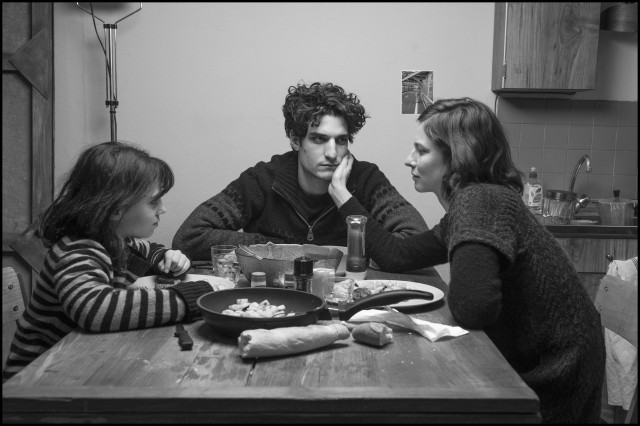

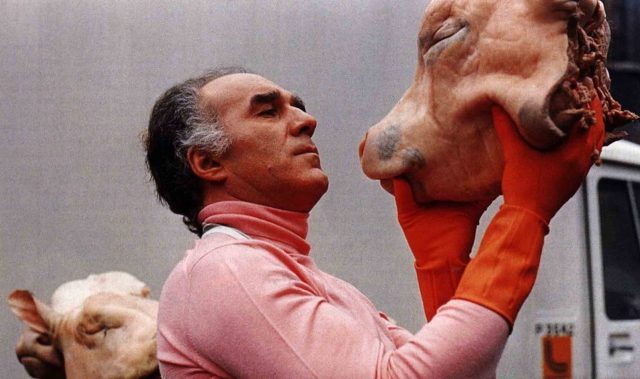
 Fed up with their lives, four old friends decide to literally eat themselves to death in one last grand blow-out. Cowritten and directed by Marco Ferreri (Chiedo asilo, La casa del sorriso), La Grande Bouffe features a cast that is an assured recipe for success, bringing together a quartet of legendary actors, all playing characters with their real first names: Marcello Mastroianni as sex-crazed airplane pilot Marcello, Philippe Noiret as mama’s boy and judge Philippe, Michel Piccoli as effete television host Michel, and Ugo Tognazzi as master gourmet chef Ugo. They move into Philippe’s hidden-away family villa, where they plan to eat and screw themselves to death, with the help of a group of prostitutes led by Andréa (Andréa Ferréol). Gluttons for punishment, the four men start out having a gas, but as the feeding frenzy continues, so does the flatulence level, and the men start dropping one by one. While the film might not be quite the grand feast it sets out to be, it still is one very tasty meal. Just be thankful that it’s not shown in Odoroma. Winner of the FIPRESCI Prize at the 1973 Cannes Film Festival, La Grande Bouffe is screening March 17, 18, 19, and 22 in Film Forum’s Michel Piccoli series. Bon appetit!
Fed up with their lives, four old friends decide to literally eat themselves to death in one last grand blow-out. Cowritten and directed by Marco Ferreri (Chiedo asilo, La casa del sorriso), La Grande Bouffe features a cast that is an assured recipe for success, bringing together a quartet of legendary actors, all playing characters with their real first names: Marcello Mastroianni as sex-crazed airplane pilot Marcello, Philippe Noiret as mama’s boy and judge Philippe, Michel Piccoli as effete television host Michel, and Ugo Tognazzi as master gourmet chef Ugo. They move into Philippe’s hidden-away family villa, where they plan to eat and screw themselves to death, with the help of a group of prostitutes led by Andréa (Andréa Ferréol). Gluttons for punishment, the four men start out having a gas, but as the feeding frenzy continues, so does the flatulence level, and the men start dropping one by one. While the film might not be quite the grand feast it sets out to be, it still is one very tasty meal. Just be thankful that it’s not shown in Odoroma. Winner of the FIPRESCI Prize at the 1973 Cannes Film Festival, La Grande Bouffe is screening March 17, 18, 19, and 22 in Film Forum’s Michel Piccoli series. Bon appetit!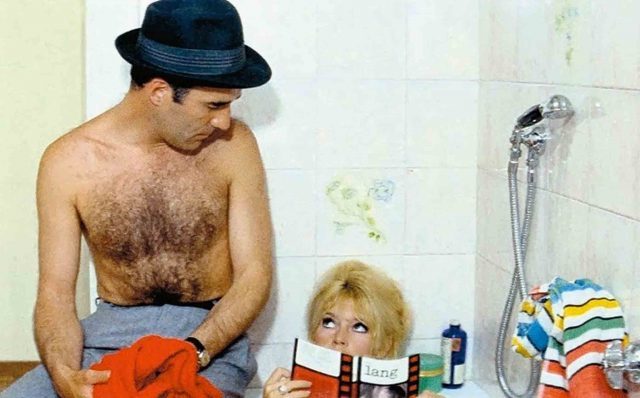
 French auteur Jean-Luc Godard doesn’t hold back any of his contempt for Hollywood cinema in his multilayered masterpiece Contempt. Loosely based on Alberto Moravia’s Il Disprezzo, Contempt stars Michel Piccoli as Paul Javal, a French screenwriter called to Rome’s famed Cinecittà studios by American producer Jeremy Prokosch (Jack Palance ) to perform rewrites on Austrian director Fritz Lang’s (played by Lang himself) adaptation of The Odyssey by ancient Greek writer Homer. Paul brings along his young wife, the beautiful Camille (Brigitte Bardot), whom Prokosch takes an immediate liking to. With so many languages being spoken, Prokosch’s assistant, Francesca Vanini (Giorgia Moll), serves as translator, but getting the various characters to communicate with one another and say precisely what is on their mind grows more and more difficult as the story continues and Camille and Paul’s love starts to crumble. Contempt is a spectacularly made film, bathed in deep red, white, and blue, as Godard and cinematographer Raoul Coutard poke fun at the American way of life. (Both Godard and Coutard appear in the film, the former as Lang’s assistant director, the latter as Lang’s cameraman — as well as the cameraman who aims the lens right at the viewer at the start of the film.)
French auteur Jean-Luc Godard doesn’t hold back any of his contempt for Hollywood cinema in his multilayered masterpiece Contempt. Loosely based on Alberto Moravia’s Il Disprezzo, Contempt stars Michel Piccoli as Paul Javal, a French screenwriter called to Rome’s famed Cinecittà studios by American producer Jeremy Prokosch (Jack Palance ) to perform rewrites on Austrian director Fritz Lang’s (played by Lang himself) adaptation of The Odyssey by ancient Greek writer Homer. Paul brings along his young wife, the beautiful Camille (Brigitte Bardot), whom Prokosch takes an immediate liking to. With so many languages being spoken, Prokosch’s assistant, Francesca Vanini (Giorgia Moll), serves as translator, but getting the various characters to communicate with one another and say precisely what is on their mind grows more and more difficult as the story continues and Camille and Paul’s love starts to crumble. Contempt is a spectacularly made film, bathed in deep red, white, and blue, as Godard and cinematographer Raoul Coutard poke fun at the American way of life. (Both Godard and Coutard appear in the film, the former as Lang’s assistant director, the latter as Lang’s cameraman — as well as the cameraman who aims the lens right at the viewer at the start of the film.)